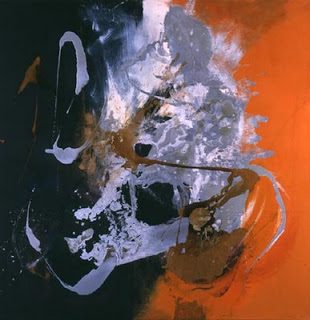Vincent de Luise
 |
Physicians find it difficult to confront and accept end-of-life issues in their patients because their professional education and ethos inform them to do all they can do to treat disease and prolong life. This is particularly difficult for ophthalmologists, who for decades have proudly trumpeted their splendid victories over various causes of visual loss, especially against cataracts, which they can safely and permanently remove and replace with a plastic intraocular lens and restore sight. Less successful have been efforts to manage glaucoma, macular degeneration, and diabetic retinal disease, the other three leading causes of blindness the world. These are diseases that we cannot yet cure and over which we are only beginning to have some control.
Based on cross-sectional studies done in 2011, almost three million people have advanced macular degeneration in the United States, and over a million more have end-stage glaucoma or advanced diabetic retinal disease. The burden of those three diseases – glaucoma, macular degeneration and diabetic retinal disease – continues to loom darkly over us as they affect an elderly population which grows ever larger. The economic burden of these diseases thus continues to increase as their progression causes more visual loss and medical visits, and more costly rehabilitation, low vision and custodial services. The emotional burden, moreover, for the patients and their family, is incalculable.
Of course eye specialists constantly preach preventive measures: annual eye exams for those over age fifty as well as measures to decrease the risk of adverse outcomes. They recommend not smoking, wearing ultraviolet-coated sunglasses when outside, weight loss and eating a balanced diet. To this one might perhaps add eating cold water fish for their omega-3 fatty acids, vitamins C and E, and the co-enzymes zinc and lutein. But we do not always see the results of these strategies in clinical practice, and often we face ore painful realities. So how does an eye specialist deal with end stage macular degeneration, glaucoma or diabetic eye disease when the patient says to us, fearfully and plaintively, “Doctor, am I going to go blind?”
Our knee jerk reaction, of course, is that there must be something else to offer: to add another drop, to try one more injection, one more procedure, more surgery. But while we have been able to transplant corneas for over a century, we cannot yet successfully transplant retinas or optic nerves, let alone whole eyes. So there are limits to our technology, when we do have to say to that patient, “I am sorry, there is nothing more to offer.”
Where then does that conversation go? Often that patient is already infirm or suffering from the consequences of bad habits over a lifetime, such as smoking and poor diet which have led to diabetes and cardiovascular, pulmonary, and renal diseases. The patient is alive, but what will the quality of that already difficult life become now as he progressively loses vision? How will that patient now deal with the loss of seeing their family and friends, driving their car, watching their favorite television shows, reading books and e-mails, or call their friends?
In 1995 I had the privilege of caring for a prominent modern artist, brilliant and inquisitive, vibrant, trim and athletic even in his late seventies. His artistic style was a wonderful amalgamation of freedom and gesture of abstract expressionism with the monumentality of the cubism. He had cataracts and was despondent because these had made it increasingly difficult for him to actualize his artistic vision and creations. I removed both cataracts, and he and his art seemed to flourish afterward, his palette regaining the colors and overall vibrancy that the cataracts had stolen.
I remember giving a lecture on art and visual perception about a year after his cataract surgery, and he graciously came to that talk to explain to the audience the changes in his visual perception and his art before and after the eye surgery.
About five years later, for no explicable reason, he developed strokes to both of his optic nerves, a few months apart, with rapid and profound visual loss. After extensive evaluations and treatments he came back to me with still substantial loss of vision in both eyes. As I examined him, he leaned in and said to me, almost in a whisper, “Vincent, if I cannot paint, I cannot live.”
About six months after that second eye had sustained profound visual loss from the stroke, he died. About a month after his death, I received a note, a note which I still have on my desk and still cherish. The note was from the artist’s spouse. It read, “Dear Vincent, He was so devoted to you. You were the architect of his eyes.” She told me that he had fallen, was hospitalized, and died of complications. Yet I still wonder about the last days and thoughts of that wondrous mind and spirit. No, ophthalmologists cannot accept end-of-sight; not easily at all. And that is how it must be, so that our patients, and at some point we are all patients, can enjoy the beauty of the world while we are still here.
Posted in part as A Musical Vision blog, April 7, 2013.
VINCENT P. DE LUISE, MD, FACS, is an assistant clinical professor of ophthalmology at Yale University School of Medicine, and an adjunct assistant clinical professor of ophthalmology at Weill Cornell Medical College where he also serves on the Music and Medicine Initiative Advisory Board. A clarinetist, he was the founder and director of the Connecticut Mozart Festival in the bicentenary year of the composer’s death, is president of the Connecticut Summer Opera Foundation, and writes frequently about music and the arts.
Fall 2015 | Sections | End of Life

Leave a Reply